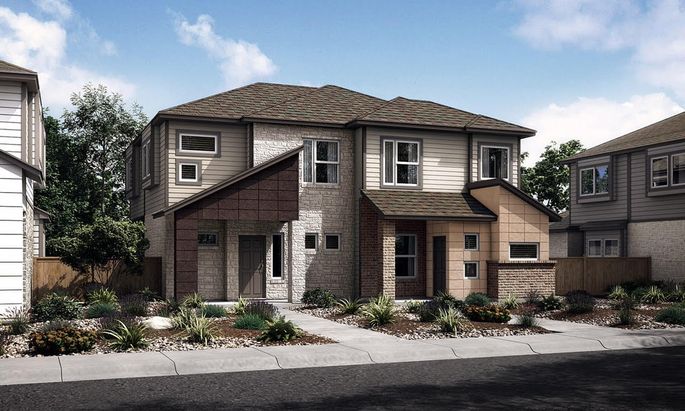
Image Credit: Pacesetter Homes / Realtor.com
By LEW SICHELMAN
Richard Bruce is looking forward to moving into his new Austin, Texas, home with his wife by year’s end. When construction is complete, the 1,700-square-foot abode will have three bedrooms, two bathrooms, plus lightning-fast Google Fiber internet service. But here are the real selling points: the geothermal heating and cooling system and photovoltaic (PV) panels which will ensure the new house produces as much energy as the couple consume.
“It’s an exciting new community,” says Bruce, 62, who works for the Veterans Health Administration. “It’s using all the newest eco-friendly technology, and it’s going to save us money on energy bills.”
The couple, who are relocating from Oklahoma City for a job opportunity, are among the first buyers in the master-planned community of Whisper Valley, the largest “net-zero” housing development in the nation. The roughly 7,500 eco-friendly standalone houses, townhouses, and rental apartments are designed to be completely energy-self-sufficient, sending as much power back to the grid as residents use.
Largest net-zero project in the U.S.
The $2 billion community, which opens in the next month or so, is sprawled over more than 2,000 acres about 8 miles east of Austin.
“This is the largest zero-energy project of its kind anywhere in the United States,” says Lorenz Reibling, co-founder of Taurus Investment Holdings, the developer of the community.
Until recently, net-zero houses have been sporadically built on single lots, or in small subdivisions. But rising energy costs combined with widespread concerns over environmental damage and global warming — and lower costs of eco-friendly tech — have given the concept a big boost.
Whisper Valley amenities will include a geothermal-heated community pool, electrical vehicle charging stations, community gardens, and miles of hiking and biking trails. The first units will range in price from the high $100,000s to the $300,000s.
Bruce is particularly excited about the pool and community meeting space, along with the smart, energy-efficient features with which the home will be equipped.
“I’d like to see more communities go this way,” he says.
Ground-source heat pumps heat and cool
What makes Whisper Valley most unique is its energy-efficient heating and cooling system that makes use of the earth itself. The homes will be hooked up to ground-source (“geothermal”) heat pumps that are 50% to 60% more efficient than traditional HVAC systems, according to the U.S. Environmental Protection Agency.
The system at Whisper Valley will cycle water through the homes and then through a series of water-filled underground coils. In summer, the water will absorb the excess heat from the home, then cool off as it runs through the coils. The cooled water is then sent back to each house, where a compressor turns it into cool air. In the winter, the process is reversed.
In addition, each house will feature solar panels, energy-efficient appliances, and smart home products that will adjust thermostats to their owners’ schedules.
Homeowners don’t pay a dime upfront for the geothermal system, PV panels, energy-efficient appliances, or even the maintenance on them. Those green amenities are estimated to cost about $30,000 to $50,000 per house, according to developer Taurus.
Instead, buyers are on the hook for a 25-year financing program to pay off those amenities. They’re expected to shell out about $175 a month through the program — about what they’d spend on their monthly utility bills, according to the the developer.
“By taking this approach, we will make a significant impact by making high-performance homes much more affordable,” says Douglas Gilliland, president of Taurus of Texas, a segment of Taurus Investment Holdings.
Demand is high
About 150 would-be buyers have already signed up for the first 30 houses.
That’s not exactly surprising because the homes are expected to cost less than many other, less energy-efficient properties currently for sale. For example, the median home list price is $455,000 in Austin and $371,000 in East Austin, according to realtor.com.
“They’re competitively priced with conventional homes,” says Realtor Ken Altes, of Eco Homes Austin, who specializes in green homes in the area. Plus, “a lot of people are concerned that the cost of conventional fuels in the future is uncertain [and could rise].”
The development is expected to foster a strong sense of community among residents who are all committed to reducing their carbon footprint.
That’s an incentive for Kimberly and Herman Juarez, who also hope to move in later this year. The couple want to downsize from their 2,800-square-foot Austin home now that their son is about to leave for college. They chose Whisper Valley for its location, eco- and budget-friendly features, and like-minded neighbors.
“We like the concept of it being all green and eco-friendly,” says Kimberly, who works at Whole Foods. Her 49-year-old husband is a financial executive at an insurance company. “Having a child, we look out for his future and that of our other nieces and nephews.”
Would a ‘passive’ approach to green design be better?
But not everyone is sold. Austin architect Peter Pfeiffer, a pioneer in green building, isn’t a big fan of Whisper Valley. He favors clean home layouts that maximize energy efficiency rather than “clean by gizmo,” he says.
Pfeiffer believes the houses at Whisper Valley would perform just as well if they were designed to take passive advantage of the sun’s rays.
“We are so wrapped up in efficiency by technology that we forget about design,” he says. “If most of the windows are oriented properly, either north or south, you can save 30% on your heating and cooling bills right there.”
Plus, a quarter-century is a long time to be paying off those geothermal and other energy systems.
“There are a lot of infrastructure costs,” says Altes, the realtor. And with continued advances in technology, “most of that [energy] system will be obsolete in 25 years.”
Lew Sichelman writes a nationally syndicated column on housing and mortgages. This post originally appeared at realtor.com.
Weekly Newsletter
Get building science and energy efficiency advice, plus special offers, in your inbox.





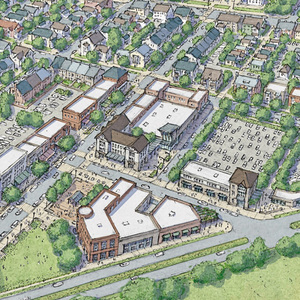
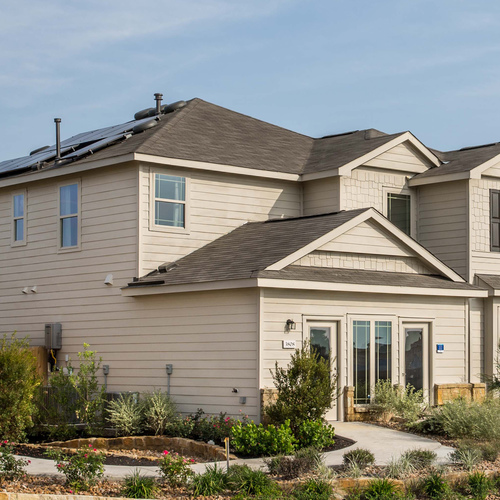
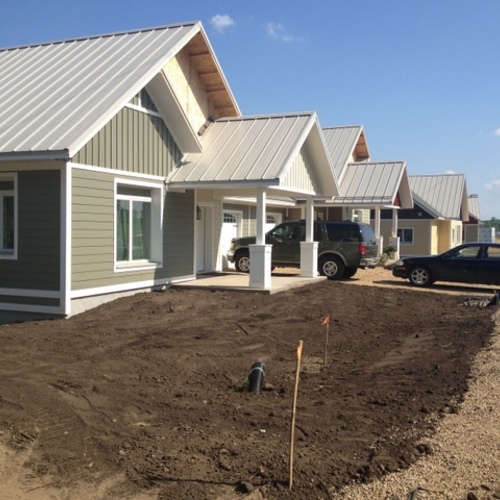
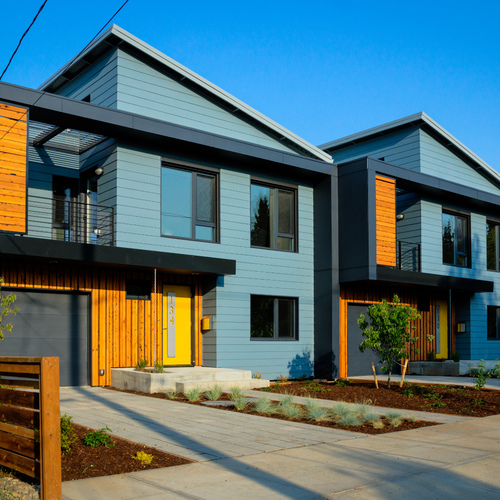






25 Comments
Better than the usual development
Austin is a hot market, and I imagine the developers could have built code-minimum houses and made more margin with less risk. Even if critics fault some of their choices (like geothermal), I would commend them for trying to find the sweet spot between what is ideal and what is practical.
Net zero is good, but
Why is the feature photo of such a monstrosity?
Speaking of geothermal, a spin-off of Google, called Dandelion, is touting it's approach to geothermal, supposedly using a new drilling technique that's quicker and cheaper.
Dandelion.com.
Curious
"They're expected to shell out about $175 a month through the program — about what they'd spend on their monthly utility bills, according to the the developer."
Q 1: Is this a PACE loan?
Q 2: So we're going to lock in the homeowner to $175/mo which is what they would have spent on utilities w/out the gizmo's. Does that make sense?
I wonder if geothermal is going to be the solution developers use in California since it doesn't impact roof design, orientation, or the number of units which can be built.
@Stephen,
It's a production house afterall. Elevations are the only thing that differentiate one house from the other next to it, but maybe not the one 4 doors down.
Reply to John Clark
Why spend extra money to build all those roofs, bumpouts and corners, making the house harder to air seal and insulate?
Code minimum in Austin is Net Zero Ready @ Steve Knapp
"Austin is a hot market, and I imagine the developers could have built code-minimum houses and made more margin with less risk. "
Since Net Zero Ready is already code minimum, taking it to full Net Zero and applying an additional monthly charge of $175 isn't much of a financial risk for the developer, and is probably even adding to their margin, since the PV & GSHP systems will all be had at a discount for the developer. The cost of rooftop PV and GSHP for 7500 houses is a heluva lot less on a per-house basis than it is for one-off installations that have to be designed & quoted separately.
John Clark: PACE=property assessed clean energy, where the financing for the clean energy or efficiency improvements are paid via charges on the property taxes.
It may or may not make sense to sign up for $175/month for 25 years, even if that's what utilities would be costing right now. I depends on whether you think energy pricing will be rising or falling over the life of the loan. If the $175/month is fixed in dollars, with no inflation increase clauses, it could turn out to be really cheap in 15-20 years, even at a fundamental background ~2% inflation rate (the target set by the Federal Reserve.)
@Stephen. Customer demand?
*shrug*
@Dana
Good points. I had forgotten about Austin's push for net-zero as code minimum. In reading further, I see that the geothermal systems were supposed to tap into one or more central wells. My development tried something similar when the HVAC contractor looped a section of homes in a series of coils located in a small lake. Feedback from my neighbors is that setup is not working particularly well as homes further along the shared line have more trouble with temperature response. But Taurus Investments likely had a lot more engineering power to apply to its design than our developer.
Response to Stephen Sheehy (Comment #2)
Stephen,
Every time I get close to declaring a winner in the Ugly House Award, I see a new entry vying for Grand Prize. This one takes my breath away.
My eyes are used to a simple New England aesthetic, where a house has just one kind of siding. (Painted white clapboard with green trim is traditional and safe, as are unpainted cedar shingles.) Sometimes, on trips to Quebec with my kids when they were small boys, we would play a game called, "Who can find a three-siding house?" They're out there -- and they sure are ugly.
This one is a five siding house (unless there are more leftover siding scraps on the sides and back that I can't see). For that reason alone -- before factoring in the bumpout problems -- the house has to take the prize.
@Martin. At least it's a duplex.
Don't 2- to-4 family get a pass on asthetics? ;)
ASHP and Architecture
They should install ASHP's instead of the GSPH, it will be much cheaper, maybe 5 times cheaper.
With all the money they save on that, they can hire an Architect. The design is really tacky. Mismatched roof styles, window styles, front door not facing the street. Pretend jogs, if you're going to jog, make it 2 or 4 feet, make it authentic.
Pick a style, either simple traditional, or clean modern. Either style can be simple to build when well designed. Instead of this mish-mash.
Anthony
Imagine what was going through the roofer's mind as he flashed that pointless mini-valley on the very right.
The comments do bring up some interesting points. While there may not be a style that is uniquely suited to high performance houses, there sure are forms that suit them better than others.
Response to Malcolm Taylor
Malcolm,
I found another image of this home online (see below). From any angle, it's remarkable.
.
> homes further along the
> homes further along the shared line have more trouble with temperature response.
Sounds like he didn't understand the need for two lines - supply and return.
Shared lake loops or wells seems reasonable. Not so sure about shared ground loops - perhaps it makes use of shared open space.
Martin
An embarrassment of riches.
@Martin. I'm not sure which is worse
A purpose built duplex such as these or a conversion of a 1-unit into 2-to-4 family. Some of those conversions are haphazard and possibly borderline illegal.
https://ggwash.org/images/made/images/posts/_resized/adu_1200_735_90.jpg
Snobbish comments
I’ve tried for a while not get involved in some of the Architectural Design comments of this house, but I think, and I presume, that since none of you are Architects, that maybe this is a subject you should refrain from some unfair comments. Some comments sound Architectural snobbish and insulting w/o the qualifications. Travel around, study and you’ll learn first.
FYI-
1) Architects design what the client want, in size, style and generally on materials.
2) Architectural styles are different in many areas of the country. Each style should be view on its own.
3) To us in the south, homes in the NE are boxy and offer no character, and on top of that, you guys use Vinyl siding… and the worst part is that you guys are proud of that!!!
FYI, the shed roofs are in “style” here in TX. I’ve done a few houses with that style of roof, and it was BECAUSE THE CLIENT WANT IT!... and yes, I’ve combined brick with siding, stone and stucco on the same house, even if would have preferred not to.
Yes, often houses are designed with dormers and complex roof and wall lines, but as long as the plans are well detailed and the GC does great work in building it, all is well. Even with your “boxes”, anyone can do a crappy job of air-sealing and detailing if they don’t have what it takes to build a high-performing house.
Many times I’ve seen pictures, elevations and plans on the GBA that I would never do on my own, but if that is what the client wants or can afford, that’s all it matters.
Please keep things in perspective. This website is great at Green Building and High-performance information; and it is not Architectural Digest.
Response to Armando Cobo
Armando,
I appreciate your comments, many of which are relevant.
We've had this conversation on GBA before, and there is no resolving it.
To some people, our architectural history is a guidepost, and a concept of architectural beauty can be acquired (and refined) by study and learning.
To others, "We build what the client wants; if the client thinks it's beautiful, then it's beautiful."
Although it sticks in my craw to say it, there is a certain basic truth to the latter approach. The beholder is the final arbiter of beauty.
No accounting for taste?
Armando: Clients certainly have the right to choose what they want to spend their money on. But the house in the photo that started this discussion wasn't drawn by a client. It's one thing for a client to say she wants some interesting angles or a bumpout. But whoever drew that house has zero aesthetic sense. Any professional can help a client get what they want without defying every rule of good taste or sensible construction.
Armando,
Actually Armando I am an architect. Does that make me more qualified than you to comment?
Architectural snobbishness
My definition of architectural snobbishness is when professional architects declare some feature to be "wrong" because it violates some rule they were taught in school. A building's exterior appearance needs to please the masses that will view it, a small percentage of whom are trained architects. Untrained people are perfectly competent to decide for themselves what is aesthetically pleasing and what is not. When a design is ugly, a trained architect is more likely to be able to express why it is ugly and to know what to change to make it better.
One example of architectural snobbishness is the rule that shutters must be half the width of the window. When I look at houses, I see very few examples of people following that rule. Usually, a standard size is used on all of the windows even if the windows vary in width. That looks right to me. When I see unusually wide or narrow shutters, even on wide or narrow windows, that looks wrong to me. (I understand that operable shutters must be that width to shut properly. When was the last time you saw operable shutters?)
When it comes to aesthetics, there are no objectively right and wrong answers. It is a matter of personal opinion. And, in my personal opinion, that house pictured in this article is very ugly.
Here we go...
I figured my post would create some responses. I would not have had a problem if the comments were relevant to building science. I’m sure we all can criticize any project anyone of us does, but there are lines of respect we should uphold. Any Architect and Designer, who’s been at this job for a while, has projects that are fantastic and some that are not, but to say to anyone that their project is the ugliest they have seen, that crosses the line of respect, IMO.
My point is that aesthetics is to the eye of the beholder, and beholders are our clients or homeowners that purchase those houses, last I checked, many of us are in the business of designing, building and selling homes. I know I’ve designed some spectacular houses, some that are OK, and some I wish I had done something different. Every single house I’ve designed, was done to my client’s wishes, and all of them are ZERHs performance level of house. In my practice, Building performance is not an option to my clients.
Armando.
I agree we should stick to what this website does best - and I also appreciate the practical insights you bring to it about building in the south, something I know very little about.
I've got to be honest though. - the photo of that house hit me like a hot shovel. It's just plain awful, and all the rationalizations in the world won't change that.
@Armando
The customer buys what they like. It is what it is, but damn, under a production builder environment their taste does make it difficult to properly construct within the specified budget. My townhome community is a perfect example. Some end units were designed with a roof line that forced rainwater to collect against a stucco chimney and subsequently leaked into the bathroom. The HOA spent big $$ to fix this defect for this particular floor plan.
You might like the website http://www.mcmansionhell.com The blogger is a grad student of architectural design. She doesn't have a clue about the economics behind residential construction, but her insight on design itself is fun to read.
Enough about looks, what about "energy-self-sufficient"?
:The roughly 7,500 eco-friendly standalone houses, townhouses, and rental apartments are designed to be completely energy-self-sufficient, sending as much power back to the grid as residents use."
Net-zero ^= energy-self-sufficient!
Far easier to design the first than the second, as anyone trying to live off-grid will attest.
Net zero hip roof is an oxymoron (i.e., it's greenwashing)
Am I missing something? There are no PV systems on the models, right? And they're all hip (actually worse, they're "crumpled paper") roofs. I call "greenwashing" on this project because there's no way they can get anywhere net zero using the roofs they've shown unless they cheat and use RECs or dedicate additional land to ground-based PV systems. Actually, I'd probably go so far as to call it false advertising (i.e., fraud).
Log in or create an account to post a comment.
Sign up Log in